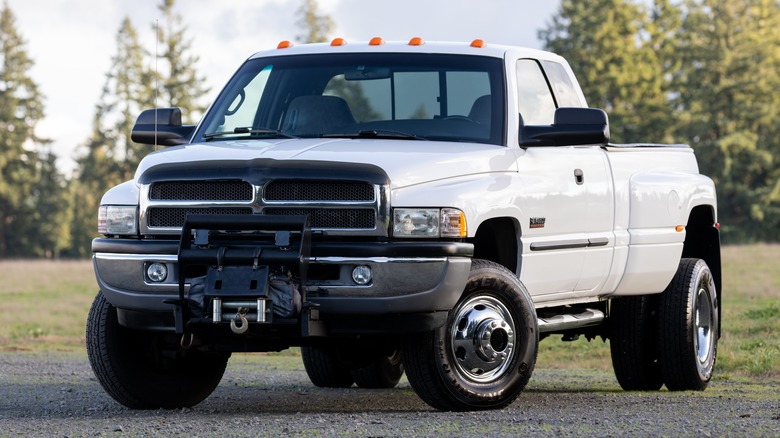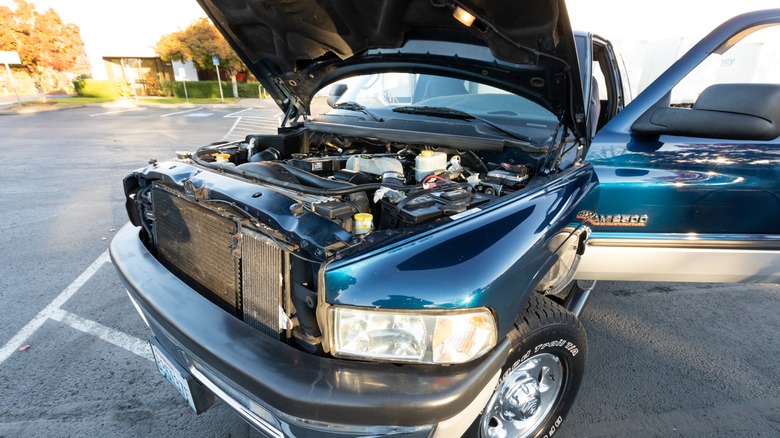What Makes The 2nd Generation Dodge Cummins So Special?
A good engine is wasted if it isn't in a good truck, and a good truck requires a suitably capable engine. The second-generation Dodge Cummins is a well-known example of a solid truck that shipped with a great engine, at least if you pick the right example. The 2nd generation Cummins is an umbrella term for Ram 2500 or 3500 trucks built between 1994 and 2002 that feature a 5.9L Cummins diesel engine. Within that time frame, two distinct variations of the Cummins diesel engine were fitted to the trucks, one with a better reputation than the other.
The appeal of the truck and its engine is fairly straightforward. The 5.9-liter Cummins engine offered higher power outputs than other diesel trucks of their day, and, with the right aftermarket parts, they could be modified to produce far more power. The Ram's exterior, particularly at launch, was also a more modern, forward-looking design than its rivals.
Confusingly, a modified 1994-2002 Ram with a non-factory Cummins engine still qualifies as a second-generation Dodge Cummins. So, a custom-built second-generation Dodge Ram with the much-loved 6.7L Cummins diesel engine is still a second-generation Dodge Cummins, despite not having its original 5.9-liter engine. But we'll focus on the 5.9-liter Cummins here.
The differences between 5.9L Cummins engines
Two engines featured under the hoods of second-generation Dodge Cummins trucks. Models produced between 1994 and 1998 featured a 12-valve 5.9-liter engine, while late 1998 through 2002 models featured a 24-valve engine. It's the earlier 12-valve engines that have the best reputation for being tough, and can be modified to produce huge power outputs, sometimes over 1,000 horsepower. That has made them a favorite with tuners looking to build dragstrip-conquering racing trucks, as well as owners looking for the ultimate high-power street build.
On paper, the later 24-valve engine was an improvement over the earlier engine. In Standard Output form, the engine produced 215 hp and 420 lb-ft of torque, while in High Output guise, it was rated for 235 hp and 460 lb-ft of torque. High Output engines also benefited from a different transmission. However, these later engines are known to be less reliable than their predecessors, particularly those years with a "53" casting number.
The 53 blocks are notorious for developing coolant leaks and are considered to be largely unrepairable. Owners have come up with several ways to patch up the leaks and prolong the life of their engines, but there's no cost-effective way to permanently fix a 53 block. While not every 1999-2002 Dodge Cummins features a 53 block, those that do are worth a lot less to those in the know.

